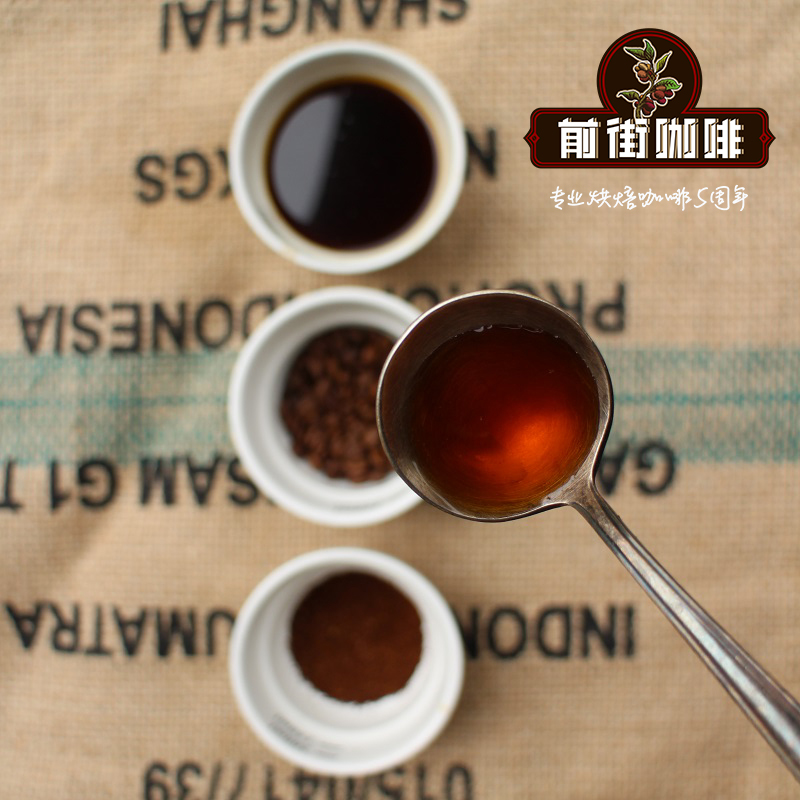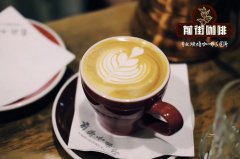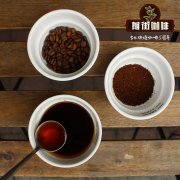Peruvian UTZ Certified Coffee | washing Rose Summer at Villarica Manor in Osapomba, Pasco Pasco

Professional coffee knowledge exchange more coffee bean information please follow the coffee workshop (Wechat official account cafe_style)
Peru UTZ certified coffee | Pasco Pasco Osammba Vera Rica Manor washing Rose Summer flavor | what is the micro-wet milling treatment?
Like many Central and South American countries, throughout the 20th century, as large European-owned land was sold or redistributed, farms became smaller and more dispersed, providing farmers with independent opportunities while at the same time limiting their access to resources and larger commercial markets. However, there is a lack of organizations or infrastructure to provide economic or technical support to farmers, and non-governmental organizations and certification bodies are trying to fill this gap. The country has a considerable number of organic coffee certification, Fair Trade Certification (Fairtrade), Rainforest Alliance (Rainforest Alliance) certification, and UTZ certification (UTZ certification, also known as international quality certification). About 30% of small farmers are members of democratic cooperatives, which increases the local popularity of coffee, but does not bring people incredibly high-quality products.
Production area: Pasco District (Pasco)
Osabomba: Oxapampa
1700 meters above sea level
A variety of rose geisha (Geisha, Peru is known locally as Geysha)
Annual rainfall is about 1200mm
Treated water-washed scaffolding for sun drying
Speaking of Peru, there are countless interesting stories, such as the ancient and mysterious Indian legends, the Sky City (Machu Pichu), the mysterious Nazca Land painting (Nazca Lines), the sky-breaking Andes Peak, Lake Titicaca (Titicaca, the largest freshwater lake in South America, at 3812 meters almost as high as Yushan). And don't forget that Peru is also the hometown of llamas, which are jokingly called grass-mud horses in Taiwan. Peru is such an interesting country, and in the boutique coffee industry, Peru is also one of the most interesting existence.
When it comes to Peruvian coffee, the most likely thing to associate with is organic certified coffee. Peru's organic coffee, in addition to the inherent human and natural conditions, the strong support of the government is also one of the important factors, almost can be said to be the most important producing area of the organic coffee market. But perhaps because of the deep impression of organic coffee engraving, the development of Peruvian boutique coffee is also easy to be overlooked. In fact, Peru can be said to have crazy boutique coffee production conditions, no kidding, it is really crazy.
Blessed by nature in the Andes, Peru is unique in its elevation and geomorphological diversity. Flying to the ancient capital Cusco, you can enjoy the snowy peaks of the Andes on the plane, but Lima, the capital, is an out-and-out coastal city an hour away. We went to the eastern producing areas of Peru, this time taking the night bus, leaving at 8 p.m., and arriving at around 9 o'clock the next morning. In a short period of 12 hours, it is an unforgettable experience to cross a mountain road about 5,000 meters above sea level and then down to a producing area of about 2,000 meters above sea level. It is not uncommon in Peru to plant 1800 or even 2000 meters above sea level. Coffee-producing families, dominated by Indians who like to live in peace with nature, grow in the most natural way and retain the old trees of many tree species.
2017 is an important year for Peruvian boutique coffee, and the first COE was held for the first time in October 2017. it also marks that Peruvian coffee farmers have expanded their focus beyond organic coffee. The batch we selected this time was also grabbed through special channels during the COE competition.
In the 2010s, Peru was one of the major producers of Arabica coffee and ranked fifth in the world's production and export of Arabica coffee. The remoteness of coffee farms and the unbelievably small size of ordinary farms have hindered the differentiation of many single farms, which has enabled microbial development and marketing in other growing areas. The country's lush highlands and excellent heirloom varieties provide growers with the potential to overcome limited infrastructure and market access barriers, and as production increases, we are more likely to see these types of progress.
Peruvian coffee farmers have a small land area, and the country's typical micro-wet milling operation (micro-wet-milling operation) is even smaller. From May to September, farmers pick ripe coffee cherries and transport them to manual pulpers and wooden fermentors. (in Peru, coffee is processed mainly by wet grinding on plantation land. In the process, the moisture content of coffee beans is reduced to about 20%, and then transported to the drying plant. However, this decentralized system is detrimental to coffee-growing areas in northern Peru, as it leads to inconsistencies in quality and promotes decay and fungal growth. )
After processing the coffee, most farmers walk or ride mules to the nearest town to sell coffee-a trip that can take 30 minutes to eight hours. On Saturday, the nearest town square became a buying and selling station for nearby remote coffee growers. Farmers sell their coffee and buy the goods they need before returning to the mountains.
This is the first time we have selected beans from Peru. Bring you three different flavors of high-quality coffee, noble not expensive, the quantity is very rare, very rare high-quality Peruvian boutique, do not miss it.
Short comment on ✧ Cup Test ✧
✦ Peruvian Pasco Osakomba Vera Rica Manor Rose Summer Geisha washing
The dry aroma is delicate and elegant, with charming flavors such as egg flower, blueberry, Earl black tea, lemon peel and so on. The palate displays pleasant flavors such as egg blossoms, blueberries, peaches, bergamot, lemon peel and coffee blossoms.
Sun treatment of Yellow Cadura seed in Vera Rica Manor, Osako District, Peru, ✦
Sweet and solid aromas of wine, mango, peach, passion fruit and red guava. Such as intoxicating aromas of wine, berries, peaches, rum grapes, flowers, and melons, papayas and other complex and charming flavors.
✦ Amazon region of Peru Rodriguez Mendoza San Nicholas Peasants Association Elephant beans / Kaddura Water washing
Dry aromas of orange peel, citrus, grapefruit and some spices, with flavors of citrus, grapefruit, black tea, dried figs and cranberries.
Qianjie recommended cooking:
Filter cup: Hario V60
Water temperature: 90 degrees
Degree of grinding: small Fuji 3.5
Cooking methods: the ratio of water to powder is 1:15, 15g powder, the first injection of 25g water, 25 s steaming, the second injection to 120g water cut off, waiting for the powder bed water to half and then water injection, slow water injection until 225g water, extraction time about 2:00
Analysis: using three-stage brewing to clarify the flavor of the front, middle and back of the coffee. Because the V60 has many ribs and the drainage speed is fast, it can prolong the extraction time when the water is cut off.
Important Notice :
前街咖啡 FrontStreet Coffee has moved to new addredd:
FrontStreet Coffee Address: 315,Donghua East Road,GuangZhou
Tel:020 38364473
- Prev

How to drink Tanzanian Moshi coffee beans-introduction of three major coffee producing areas of Tanzanian coffee varieties
Professional coffee knowledge exchange more coffee bean information please follow the coffee workshop (Wechat official account cafe_style) Tanzania coffee beans Source: in 1898, bourbon coffee was introduced by Catholic priests to the Kilimanjaro region of Tanzania. Then the Kent species was introduced in 1920. So, so far, coffee in Tanzania is also Ebourbon and Kent.
- Next

Introduction of boutique coffee beans in Xibi Falls Manor, Uganda _ dry fermentation water washing Ugandan coffee flavor
Professional coffee knowledge exchange more coffee bean information please follow Coffee Workshop (Wechat official account cafe_style) Uganda Coffee-Shibi Falls washing Rainforest Certification Uganda Sipi Falls Organic RFA Washed Uganda Coffee Story from Kapchorwa District, Cheema Village, eastern Uganda. The area is very close to Mt. Elgon National Park
Related
- Detailed explanation of Jadeite planting Land in Panamanian Jadeite Manor introduction to the grading system of Jadeite competitive bidding, Red bid, Green bid and Rose Summer
- Story of Coffee planting in Brenka region of Costa Rica Stonehenge Manor anaerobic heavy honey treatment of flavor mouth
- What's on the barrel of Blue Mountain Coffee beans?
- Can American coffee also pull flowers? How to use hot American style to pull out a good-looking pattern?
- Can you make a cold extract with coffee beans? What is the right proportion for cold-extracted coffee formula?
- Indonesian PWN Gold Mandrine Coffee Origin Features Flavor How to Chong? Mandolin coffee is American.
- A brief introduction to the flavor characteristics of Brazilian yellow bourbon coffee beans
- What is the effect of different water quality on the flavor of cold-extracted coffee? What kind of water is best for brewing coffee?
- Why do you think of Rose Summer whenever you mention Panamanian coffee?
- Introduction to the characteristics of authentic blue mountain coffee bean producing areas? What is the CIB Coffee Authority in Jamaica?

